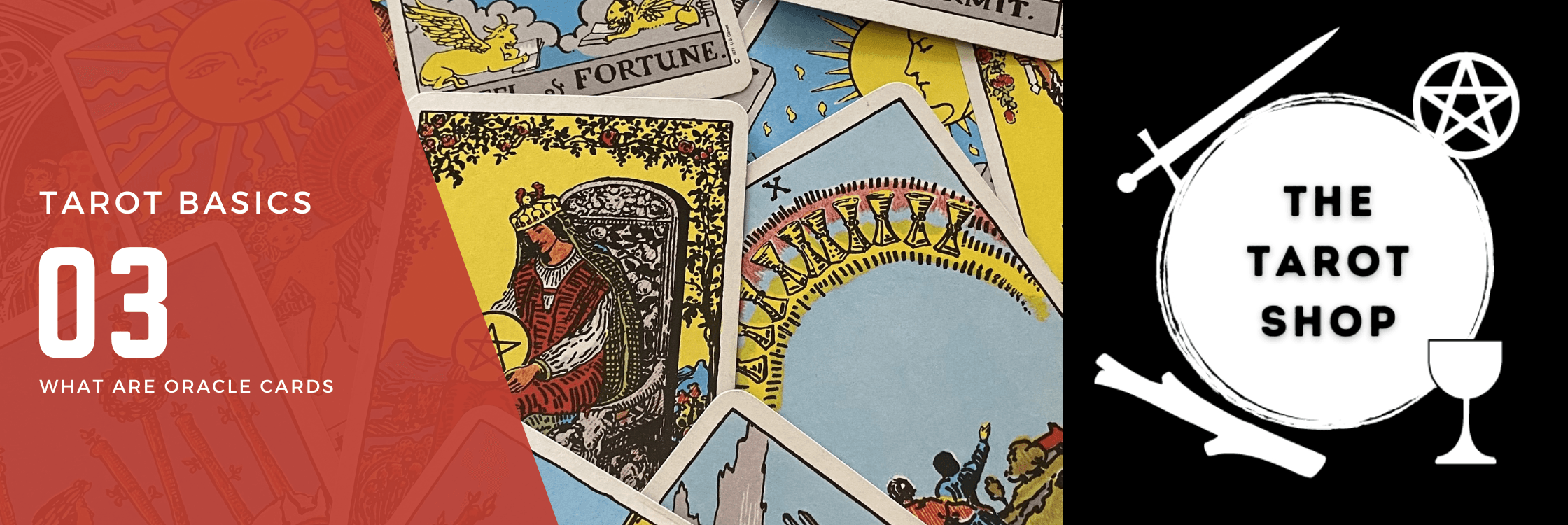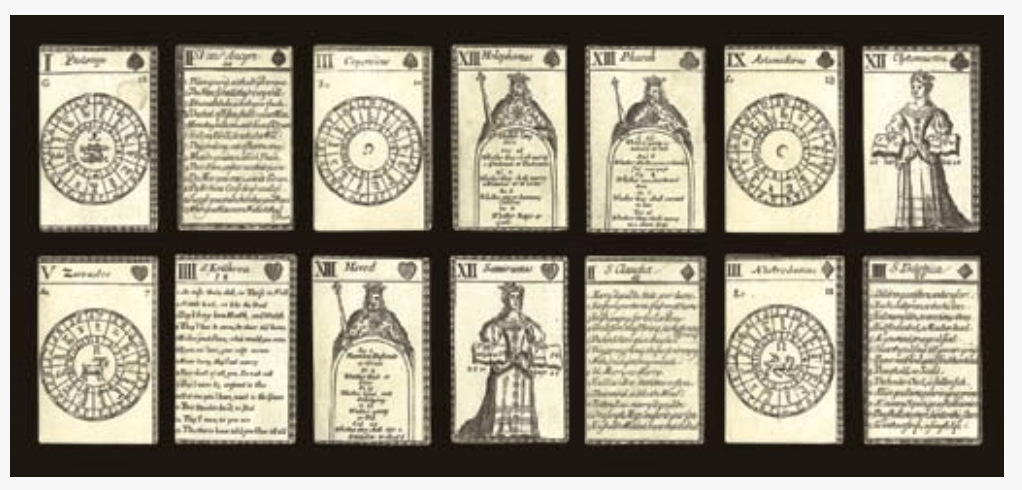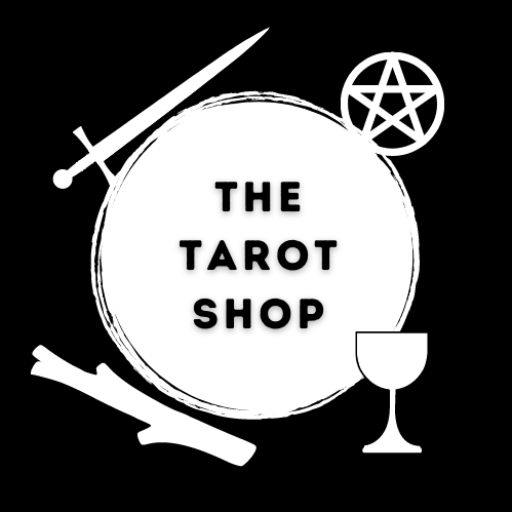
For those who don’t already know the answer, you could easily be forgiven for assuming that Oracle cards are the same as Tarot Cards, which of course they aren’t! They originate from France and Germany, have a different pack format and can be read instantly (no training required, it’s all in the booklet that comes with every pack). Both are used for Divination purposes but that’s where their similarities end.
I always advise beginners to start their Tarot journey with a pack of Rider-Waite (or Waite-Smith as Tarot professionals prefer to call them in honour of the original artist Pamela Smith-Coleman) plus a pack of Oracle Cards that take your fancy. The reason for this is simple. Oracle cards are beautiful and incredibly easy to read. The meaning is usually written on the card which makes them perfect for self-divination. This is a great tool for tapping into your intuition or Higher Self daily. There are various options to turn a card per day or seek guidance and advice to a question. Whilst you can get the same result with the Tarot, it takes some time to master the 78 card interpretations and different spreads.
Don’t let the simplicity for reading Oracle cards fool you into discarding them as a modern creation. Those gorgeous hard working Historians have delved through the traces of time and discovered origins dated 1505 called ‘Mainzer Kartenlosbuch’, it’s a piece of paper with eight images and divinatory verses. The first promise the reader that they’ll meet sorrow for drinking too much wine! Then it moves on to issue further pearls of wisdom such as; to serve God and all will be well; you are in debt from too much borrowing and will die a beggar! (Nice!); you’ve survived sorrow and all will now be well; there will be secret sorrow from an old love; you’ve lived a constant life so will live long with honours and riches; you’ll have good luck and honours, and my absolute favourite – you’re criticised cause of too much avarice. You’ll lose a tooth and a thief will spend your money!! How specific is that!?
Moving on, the oldest deck of oracle cards produced specifically for divination are believed to have been printed by John Lenthall, circa 1690, through his own London Stationers. It seems a pretty reliable source as a reproduction of these cards sold for $8400 through Christie’s Auction House with the following description and image:
“Lenthall Fortune-Telling Deck, circa 1715, London, John Lenthall 54 of 54 cards, copper engravings, includes 52 suit cards plus two instruction cards, knave, queen and king numbered XI, XII and XIII respectively, English duty tax stamp number 19 on the upper right-hand corner of the ace of spades, 6 pence (valid 1711-1756), French suits, Roman numbers, one index, square corners. This deck is the second edition, first advertised in 1711 by John Lenthall Stationer at the Talbot against St. Dunstans Church, Fleetstreet, London and sold by him until 1720. After choosing a question found on one of the kings, the inquirer is directed to one of the odd-numbered sphere cards, each headed by the name of a celebrated sage or magician, and subsequently, by drawing a card from the shuffled pack, to a name and number on a queen or knave, and then to even-numbered cards containing reputed sayings in English of famous sibyls of antiquity for an answer to the question. Backs plain white. Size 3 9/16 in. (9.1 cm.) high, 2 5/16 in. (5.8 cm.) wide. Some foxing on knave of clubs, otherwise in generally fine condition.”

The next acknowledged divination card deck to appear is circa 1770 with a book to accompany a standard deck of playing cards. It’s quite a fun book titled ‘Patridge and Flamstead’s New & Well Experienced Fortune Book, delivered to the world from the Astrologer’s Office in Greenwich Park – for the benefit of Young Men, Maids, Wives and Widows’. There’s the obvious challenge that this wasn’t really from the Royal Astrologer’s desk but different authors who used their names. Anyhow, the sitter would draw a card and refer to the book for the answer. For example, if you drew the 3 of hearts; ‘The poor man that draws this tray. When he’s bound he must obey; Women that shall take this sort, Will drink brandy by the quart.’
Moving to the present day, there are two Oracle card practices as such. The first is a selection of free-flow creative designs using any number of themes, from angels to fairies and animal totems. There are hundreds to choose from but the most comprehensive are those from Hay House publishers. You can check out some of the designs below or find them on offer HERE. The second Oracle card practice derives from the most famous European fortune teller Mlle Lenormand during Napoleon’s time. She used a set of 36 Lenormand cards with a pre-determined card layout to accurately predict the future. Although they are categorised as Oracle cards due to their nature, they are infact ‘Lenormand Cards’ and I talk about them separately HERE.
If you want to simply practice before you buy your first deck of Oracle Cards I have a handy PDF you can download FREE. I suggest you use printable card stock if you choose this option. Also, I have published a book on How to Create Your Own Oracle Cards, which is available on Amazon HERE. It’s a little book for the creatives amongst you.
I recommend that you choose a deck of Oracle cards that appeal to you, and use them regularly whilst you learn either the Tarot or Lenormand. Below are a few samples of modern Oracle Cards, which I think you’ll agree are thankfully simpler than the original John Lenthall. As well as being visually beautiful they all come with a handy booklet with further meanings for each card.







